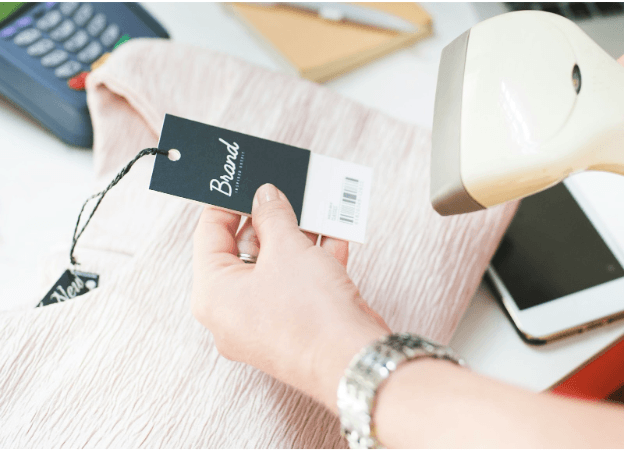Private labeling has quietly reshaped modern retail, offering brands a flexible route to market without the heavy burden of manufacturing. It empowers companies to focus on branding, customer experience, and innovation while leaving production to trusted partners.
As Ian Schenkel of Newport Beach knows, this strategy has proven effective for both emerging startups and established retailers, helping them differentiate their offerings and build customer loyalty. When done right, private labeling allows businesses to scale efficiently, maintain consistent quality, and respond swiftly to market trends.
The following explores the key components of building a sustainable and recognizable private label brand—from crafting identity and choosing manufacturers to managing growth and ensuring long-term consistency.
Contents
Understanding Private Labeling and Its Business Appeal
Private labeling allows companies to sell products under their own brand while outsourcing production to a third-party manufacturer. This model has gained traction in sectors like skincare, coffee, and wellness supplements, where businesses can quickly enter the market without building a factory or managing complex logistics.
Smaller brands often favor private labeling because it reduces startup costs and accelerates product launches. It also gives them more control over packaging, pricing, and brand experience. Retailers like Trader Joe’s and Target have used private label strategies to compete with national brands while reinforcing customer loyalty through exclusive offerings. These private labels often become brand identities in themselves, creating a sense of exclusivity and trust.
In today’s competitive landscape, private labeling is no longer limited to low-cost generics. Many emerging brands are using this approach to offer quality products with distinct branding, blending affordability with a tailored market presence.
Building and Protecting Brand Identity
Brand identity is more than a logo or color scheme—it’s the emotional connection a customer forms with a product. In private labeling, where multiple sellers might offer similar goods, standing out becomes essential. A strong identity helps customers remember a brand and return to it, even when alternatives are just a click away.
Some private label brands succeed by tapping into lifestyle messaging or niche values. A natural skincare line using minimalist packaging and earth-toned branding might resonate with eco-conscious buyers, creating a sense of trust and alignment that goes beyond the product itself. This emotional resonance often leads to word-of-mouth marketing and organic brand growth.
When companies neglect their branding, products risk blending into a sea of sameness. In high-volume markets, a lack of distinction can make it difficult to build long-term loyalty or justify premium pricing. Once a brand is perceived as generic, it becomes much harder to elevate its value in the eyes of consumers.
Managing Growth Through Scalable Production
As demand rises, maintaining quality becomes more complex. A product that’s easy to produce in small batches can face setbacks when scaled—delays, inconsistent materials, or misaligned labeling can all threaten brand reputation. Even packaging errors, if unnoticed, can result in costly recalls or lost trust.
Brands that scale too quickly without refining their supply chain may struggle to fulfill orders or meet customer expectations. In some cases, even slight changes in texture, packaging, or delivery timelines can erode consumer trust, especially if they’ve grown used to a certain standard. A sudden shift in experience can be jarring to loyal users.
Growth is exciting, but without the right systems in place, it can expose weaknesses. A carefully managed production strategy is vital to support both volume and brand consistency. Long-term growth depends on anticipating these challenges early and addressing them before they affect the end user.
Selecting the Right Manufacturing Partners
Choosing a manufacturing partner isn’t just about price—it’s about trust, reliability, and shared standards. A good partner understands your brand vision and can consistently deliver quality that aligns with it. Brands that invest time in vetting their suppliers often avoid costly pitfalls later on.
Some companies request trial runs or conduct unannounced audits to ensure production practices match expectations. This extra diligence helps confirm not only product quality but also a factory’s ability to scale with demand. When alignment is strong from the start, long-term collaboration becomes far more seamless. Establishing open communication channels and transparency in operations further strengthens these partnerships.
Keeping Brand Consistency at Scale
As a business grows, so does the challenge of staying visually and emotionally consistent across every customer touchpoint. Design elements, tone of voice, and packaging details must remain cohesive even when multiple teams or vendors are involved. If a customer receives a product that looks or feels different from what they purchased before, it can raise doubts about authenticity.
Clear internal guidelines and regular quality reviews can help preserve a brand’s character. Successful companies often rely on structured feedback loops, where customer insights play a role in refining presentation and messaging. Over time, this attention to detail reinforces trust and positions the brand as dependable, even in a crowded market. Consistency becomes a silent ambassador for the brand, reassuring customers with every interaction.
Planning for Sustainable Private Label Growth
Scaling a private label business requires more than ambition—it demands foresight. Brands that grow steadily often use phased rollouts, testing product reception in smaller markets before committing to wide-scale distribution. This approach lets them fine-tune logistics and messaging without overwhelming their operations. It also helps identify potential weak spots in supply chain or customer service.
Data plays a crucial role in shaping smarter decisions. Sales trends, customer feedback, and supplier performance metrics can all guide expansion strategies. Rather than chasing rapid gains, successful brands take a measured path, ensuring that each step forward supports long-term value and reinforces their market position. Building a brand with longevity means balancing innovation with operational stability.







